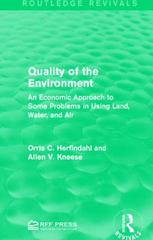..Will appreciate help with this...
1. The following shows the demands and marginal revenue in two markets (D1 and MR1, and D2 and MR2) for a price discriminating firm along with total demand, DT, marginal revenue, MRT, and marginal cost MC. 350 325 300 D2 275 MR2 250 225 MC 200 175 DI DT MR1 150 125 MRT 100 75 50 25 100 200 300 400 500 600 700 800 . . D1 - - - MR1 - D2 - MR2 WWWWWW= = MRT DT MC As with the PPT slides, you can view the data generating these lines; for reference, D1 = 200 -0.25Q D2 = 300 - 0.25Q MRT = 250 - 0.25Q DT = 250 - 0.125Q MC = 0.0008Q 2 - 0.45Q + 150 a. Compare the demand conditions in each market; i.e. how do the two markets differ in their demand for the firm's product? b. How much total output should the firm produce (for both markets combined)? How should that output be allocated between markets 1 and 2? c. What price should the firm charge in each market?*7. The Saga Food Company produces one type of frozen dinner sold directly to consumers and to restaurants. The demand and marginal revenue functions for Saga's frozen dinner by consumers (market 1) and restaurants (market 2) are, respectively, 21 = 160 -10P or P, = 16-0.10, and MR, = 16-0.20, 22 =200 -20P, or P, = 10 -0.050, and MR, = 10-0.102 Saga's total cost function is TC = 120 + 40 Draw a figure showing (a) the demand, marginal revenue, and marginal cost curves faced by the firm; (b) the best level of output of the firm and how the firm should distribute sales in each market in order to maximize total profits with third-degree price discrimination; (c) the price and total revenue of the firm in each market with third-degree price discrimination; (d) the profit per unit and in total with third-degree price discrimination; and (e) the output, price, total revenue, and profit per unit and in total in the absence of price discrimination.Question 3. Suppose initially there is a monopolistically competitive rm earning positive prot in the market. How will the market adjust to a new long-nut equilibrium? Explain and provide adequate graph to supplement your answer. (5) Question 4. (a) Explain the concept of consumer equilibrium in terms of the Equi-marginal principle. Provide appropriate graph for explaining you answer (5) (b) Suppose you have a budget of I000 taka. The price of one unit of X is 20 taka, and the price of one unit of Y is 10 take. If X provides you utility and Y gives you disutility, what is the equilibrium amount of X and Y for the consumer? Explain your answer using appropriate graph









